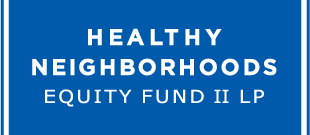HNEF celebrates completion of Braintree development -- a major, mixed-use TOD project: "The type of solution our region needs…”
A Grand Opening ceremony was held last month to celebrate completion of Landing 53, a new transit-oriented real estate development (TOD) in Braintree. The project, for which HNEF I invested $5 million, is the second of the equity fund’s projects to be completed.
HNEF officials joined the developer Joshua Katzen and the development team, Braintree Mayor Joseph Sullivan, other public officials and area residents to view the project, reflect on its importance for Braintree’s ongoing revitalization, and to cut the symbolic ribbon.
At the ceremony, MHIC President Joe Flatley said, “This area used to be a thriving industrial and commercial district. Now it’s once again becoming a vibrant community. Landing 53 will help boost Braintree’s economy and ignite the transformation under way.”
Landing 53 is directly across from the MBTA’s Weymouth Landing-East Braintree commuter rail station, built on land formerly occupied by semi-vacant buildings. It has 172 moderately-priced rental apartments and ground floor commercial/retail space.
The 2-acre site on which Landing 53 was built was considered ideally suited for redevelopment because of its proximity to public transit, strong public support, and other revitalization efforts under way. When considering the project as a potential investment, HNEF focused on its potential for transformative impacts and concluded that the project could contribute significantly to the health of the neighborhood and the people who live there.
It took three years for the development team to get the Landing 53 plan in place, and it was a major priority for the town, which spent $2 million in state funds and some town money to improve the area with underground utility lines and improved street lighting, sidewalks and crosswalks. HNEF’s investment in 2016 provided the crucial equity gap financing that enabled the project to move forward.
CLF President Bradley Campbell said, "CLF is proud to be a founding partner, along with MHIC, of HNEF I. This transit-oriented development is the type of solution our region needs to address the serious and growing problems of climate change and public health.”
Now completed, the attractive building includes a health club, lounge, leasing office, common interior space, an elevated patio and indoor storage for bicycles, kayaks and canoes and other amenities to enhance the environment and encourage outdoor activity. For example, the developer connected pedestrian pathways around the property to a network of paths of the Monatiquot River and canoe launches, encouraging people to exercise and enjoy nature. On the ground floor, the building will contain 3-4 stores occupying a total of 12,000 square feet.


